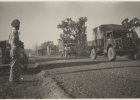NSW Department of Main Roads assist in the Northern Territory
From 1940 to 1943 the Australian Government co-opted the road construction authorities of the state governments to build roads, airfields and other defence works and infrastructure in the Northern Territory. One of these co-opted organisations was the NSW Department of Main Roads. By 1943 the Department had built airfields at both Norfolk Island and New Caledonia and helped the Main Roads Commission of Queensland to build the Ipswich to Charters Towers Inland Defence road. The men who volunteered to work on these projects came from within the Department and from other sections of state and local government.
List of images used in this Gallery
1. Birdum 1940 – unloading plant – NRS 20012 [6/17259, p.4, photo 3]
On 26 July 1940 the Army approached the governments of NSW, Queensland and South Australia for advice on how to build a gravelled all-weather road from Tennant Creek to Birdum in the Northern Territory. The road was needed to fill the gap in the rail link from Darwin to Adelaide. The War Cabinet approved the plan in August, placing the Commissioner of Main Roads NSW in charge of the engineering work. The main work party from NSW sailed to Darwin and then travelled by rail to Birdum to start work on the 139 km section allocated to NSW. Work began on 21 September and was finished by 2 December. This image shows the unloading of machinery from a flatbed rail car at Birdum.
2. Return of plant machinery, December 1940 – NRS 9771 [10/27331] file 40m1402
This list of plant machinery to be sent back to Sydney shows the range of machinery the NSW Dept of Main Roads took to the Northern Territory in 1940. Not all the machines would be be shipped out, with some left in Darwin to maintain the road during the wet season. In June 1941 machines were once again shipped north. After 1941 they remained in the Territory and in 1942 extra machines were sent from NSW. Expeditions of men also went north, with 170 men team in 1940, 300 men in 1941 and 750 men in 1942. The 1940 team worked two shifts, six days a week and then three shifts seven days a week.
3. Plant line-up at Coomallie Creek, July 1941 – NRS 20012 [6/17260] p.7, photo 3, Photographer Mr Wilson.
4. Adastra Airways plane and crew, June 1941 – NRS 20012 [6/17260] p.1, photo 3, Photographer Mr Endean
5. Section of aerial photograph, June 1941 – NRS 9777 [10/42948 AS-2R-71]
6. Overland military convoy in NT, 1941 – NRS 20012 [6/17260] p.27, photo 3, Photographer Mr Endean.
7. Thank you letter from Arthur Fadden, Prime Minister of Australia to the Premier of NSW, August 1941 – NRS 9771 [10/27335] file 41m524
8. Edith River Bridge, 1942 – NRS 20012 [6/17261] p.31, photo 1
During 1942 the NSW Dept of Main Roads constructed 172 miles (277 km) of road, sealed 19.3 miles (31 km) with bitumen, cleared 259 acres (104.8 hectares) of land for eight airfields, formed 478, 000 square yards (40 hectares) of runway and sealed more than half of those with bitumen. What a fantastic effort!
9. New Caledonia – Tontouta Aerodrome, 1941 – NRS 9771 [10/27337] file 41m1472
In 1940, following the defeat of France by Germany, New Caledonia decided to support the Free French movement. In 1941 New Caledonia asked the Australian Government for help to finish the Tontouta Aerodrome and on 19 November the NSW Dept of Main Roads was given the job. Shipping problems arose immediately as the Dept needed to send 180 men, two bulldozers, two tractors, hot mix units and other machinery, as well as food stores. This letter, from Andre Brenac, Representative of General de Gaulle, highlights issues surrounding passports and export/import licenses. NRS 9771 [10/27337] file 41m1472
10. Nightmare in The Territory – Cartoon, 1943 – NRS 20015 [SR Doc 213]
Initially, the state road authorities dealt directly with the Army. In February 1942 the Allied War Council was created and by June 1943 it was the chief co-ordinator for the Northern Territory construction work. By 1943 state and local government employees volunteering to work in the Northern Teritory were enrolled in its Civil Construction Corps. In 1943 the NSW Dept of Main Roads maintained the roads it had previously built in the Territory, tarred 168 (270 km) of road between Darwin and Katherine and built 26 miles (42 km) of access roads. In conjunction with the RAAF it constructed five airstrips at Fraser, Tindal, Riding, McDonald and Long, and set up a water supply at the Batchelor airfield which included an eight mile pipeline. Some of the men who worked on the Batchelor water supply have signed this cartoon, ‘Survey of the Batchelor Water Supply on Xmas Eve’, which was drawn by WF Davis.
11. Tontouta Aerodrome opens for visitors, 1942 – NRS 9771 [10/27337] file 41m1473
12. Unloading at Kingston Pier, Norfolk Island, 1942 – NRS 20013 [6/17265] photo 192
On 11 May 1942 the United States decided to construct a safer South Pacific air ferry route. This new route was further south and connected Christmas (Kiritimati) Island, the Cook Islands, Tonga Islands, Norfolk Island and Sydney. On 3 August the NSW Dept Main Roads was asked to build the Norfolk Island aerodrome, under the supervision of the Americans and using American machinery. Norfolk Island presented unique problems in landing heavy machinery. Ships had to anchor out to sea and the equipment was then transferred to a barge before unloading at either Kingston or Cascade Pier. This image shows one of the problems of getting equipment from a barge at Kingston Pier using a 10 ton Le Tourneau crane.
13. Norfolk Island Aerodrome, 1942 – NRS 20013 [6/17265] photo 354.
14. Supply truck bogged down in Queensland – NRS 20014 [6/17263] transport photo 9
15. First convoy on completed road, north of Clermont, 1943 – NRS 20014 [6/17263] first use of road photo no.4.
Further reading
The roadmakers: a history of main roads in New South Wales, Dept Main Roads NSW, 1976.
Research by
Research for the World War II: 1942 Gallery was completed by Jennifer Sloggett of State Records NSW.
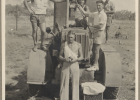
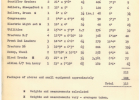
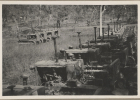
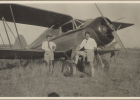
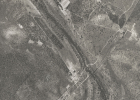
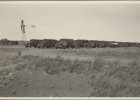
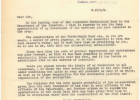

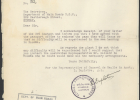
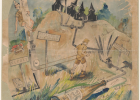
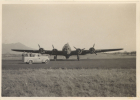
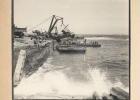
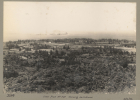
![14. Supply truck bogged down in Queensland. NRS 20014 [6/17263] transport photo 9 14. Supply truck bogged down in Queensland. NRS 20014 [6/17263] transport photo 9](/wp-content/gallery/world-war-ii1942-outside-our-borders/cache/image_thumbcaw2rvnv.jpg-nggid03932-ngg0dyn-140x100x100-00f0w010c011r110f110r010t010.jpg)
